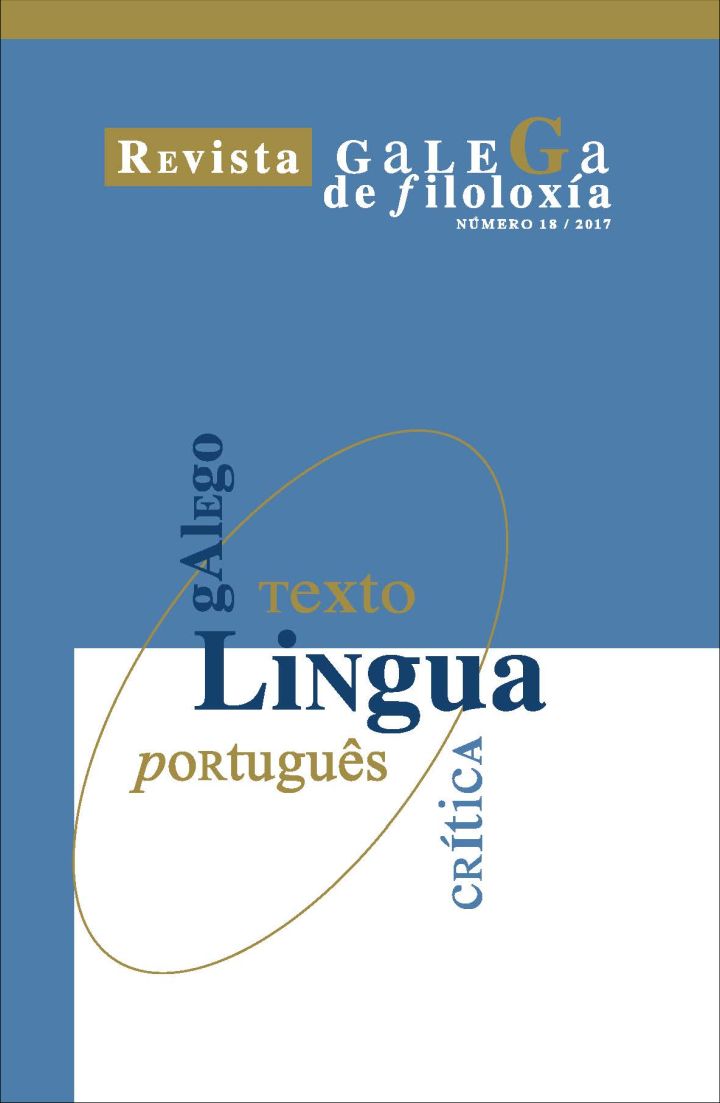Por outras palavras (in other words) and digamos (so to speak): reformulation markers?
Main Article Content
Abstract
With this study, we aim to continue the study of the reformulative markers in European contemporary Portuguese (Lopes 2014). Two new discourse markers, por outras palavras and digamos, are syntactically, semantically and pragmatically described in this paper. The empirical data were colected from CETEMPúblico and the oral subcorpus of CRPC. Even though both discourse markers can be included in the paradigm of the reformulative ones, the study proves that digamos is not a prototypical member, given its productivity as a filler and a mitigation operator.
Keywords:
Downloads
Metrics
Article Details
References
Andersen, G. (2000): “The role of the pragmatic marker like in utterance interpretation”, en Andersen, G. & Fretheim, T. (eds.). Pragmatic Markers and Propositional Attitude, 17-38 (Amsterdam: John Benjamins).
Auer, P. (1996): “The pre-front field in spoken German and its relevance as a grammaticalization position”, en Pragmatics, 6 (3), 295–322.
Bach, C. (1996): “Reformular: ?una operación argumentativa aséptica? Estudio del conector de reformulación parafrástica es a dir”, en Sendebar, 7, 255-271.
Briz, A. & Albelda. M. (2013): “Una propuesta teórica y metodológica para el análisis de la atenuación lingüística en español y portugués. La base de un proyecto en común (ES.POR.ATENUACIÓN)”, en Onomázein, 28, 288-319.
Cuenca, M.-J. (2003): “Two ways to reformulate: a contrastive analysis of reformulation markers”, en Journal of Pragmatics, 35, 1069-1093.
Fløttum, K. (1994) : « A propos de c’est-à-dire et ses correspondants norvégiens », en Cahiers de linguistique française, 15, 109-130.
Fonseca, J. (1992): “As articulações discurso-metadiscurso e as suas explorações na didáctica do português como língua estrangeira”, en Fonseca, J. Linguística e Texto/Discurso: teoria, descrição, aplicação (Lisboa: ICALP).
Gülich, E. & Kotschi, T. (1983): « Les marqueurs de la reformulation paraphrastique. Connecteurs pragmatiques et structure du discours », en Cahiers de linguistique française, 5, 305-351.
Halliday, M. (1973): Explorations in the Functions of Language (London: Arnold).
Koops, C. & Lohmann, A. (2015): “A quantitative approach to the grammaticalization of discourse markers. Evidence from their sequencing behavior”, en International Journal of Corpus Linguistics 20, 2, 232–259.
Lopes, A, C. M. (2014): “Contributo para o estudo sincrónico dos marcadores discursivos quer dizer, ou seja e isto é no português europeu contemporâneo”, en Diacrítica, 28 (1), 33-50.
Mann W. & Thompson, S. (1988): “Rhetorical Structure Theory: Toward a Functional Theory of Text Organization”, en Text, 8 (3), 243–81.
Nascimento, M. F. B. (2013): “Processos de lexicalização”, en Raposo, E. P. et alii (orgs.). Gramática do Português, 215-246 (Lisboa: Fundação Calouste Gulbenkian)
Rossari, C. (1994): Les opérations de reformulation (Berne: Peter Lang).
Roulet, E. (1987) : « Complétude interactive et connecteurs reformulatifs », en Cahiers de Linguistique Française, 8, 11-140.
Sweetser, E. (1990): From Etymology to Pragmatics: Metaphorical and cultural aspects of semantic structure (Cambridge: Cambridge University Press).
Taboada, M. & Mann, W. (2006): “Rhetorical Structure Theory: Looking Back and Moving Ahead”, en Discourse Studies, 8 (3), 423–59.
Van Dijk, T. A. (1977). Text and Context. Explorations in the Semantics and Pragmatics of Discourse (London: Longman).



